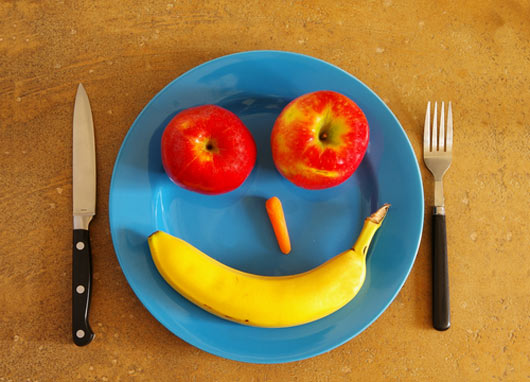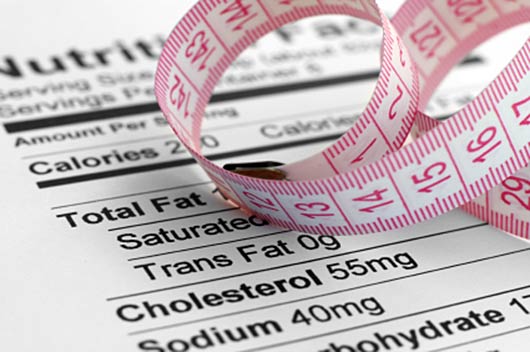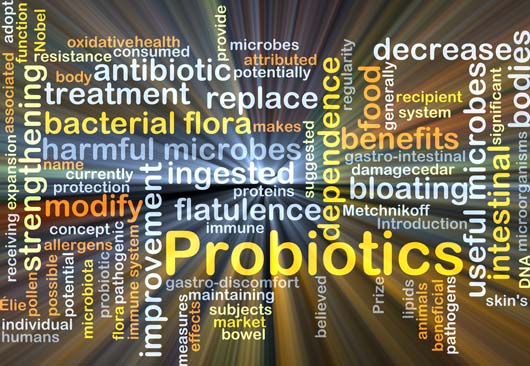
UPDATED March 26th, 2018
For five years now I’ve been trying to learn what’s behind my son’s sickness: frequent knee pain. Since the age of two he’s had pain in his joints about three times a week, usually in the evening. Sometimes the pain is so severe he needs to lie down; sometimes his ankles hurt, too. After a series of expensive tests ruled out frightening scenarios like leukemia, arthritis, and Lyme disease, he was sent home with a diagnosis of “growing pains” and was told to use ibuprofen. I cringed, like most parents do when doctors just medicate, but what option did I have?
Then I found What’s Eating Your Child?, a 2012 Golden Nautilus Book Award winner that connects common childhood ailments, like recurrent ear infections, anxiety, rashes, and even Attention-Deficit Hyperactivity Disorder (ADHD), with food. “Nutrition affects behavior, mood, brain activity, and common allergies,” says the book’s author, the nutritionist Kelly Dorfman. Yet pediatricians still don’t make these connections. It’s up to the parents to connect the dots. We’ve become so numb to doctors prescribing Ritalin for ADHD, antibiotics for ear infections and lotions for rashes, that a book that says, “Hey, did you try changing your diet?” sounds pretty radical. It seems most nutritional problems fall into one of two areas: something being consumed is irritating or something that the body needs is missing.
 In a recent interview with Mamiverse, Dorfman stressed the importance of becoming “nutrition detectives.” Keeping a daily log to track what your kid is really eating before making an appointment with an allergist or nutritionist can save you a lot of time. Parents often end up saying, “Oh, I didn’t realize he was drinking so much milk.” It’s best to trust your gut on what you suspect might be the cause. Ultimately, “nobody knows your child better than you do,” adds Dorfman.
In a recent interview with Mamiverse, Dorfman stressed the importance of becoming “nutrition detectives.” Keeping a daily log to track what your kid is really eating before making an appointment with an allergist or nutritionist can save you a lot of time. Parents often end up saying, “Oh, I didn’t realize he was drinking so much milk.” It’s best to trust your gut on what you suspect might be the cause. Ultimately, “nobody knows your child better than you do,” adds Dorfman.
Read Related: Kids With Allergies? Try These Tasty Substitutes
SYMPTOMS OF GLUTEN INTOLERANCE
If your child suffers from chronic stomach pain, reflux, constipation, bloating, and loose stools it may point to Celiac Disease (CD). Especially if he or she eats a lot of pizza, pasta and bread like we do at home. CD is an autoimmune disease triggered by wheat gluten. Gluten intolerance, a different ailment, occurs when the body has trouble digesting this protein. Children may also have CD or gluten sensitivity and suffer symptoms like joint pain, unexplained headaches or just fatigue. “Nobody knows why eating gluten causes so many seemingly unrelated conditions such as chronic anemia, neurological problems, osteoporosis, joint pain, chronic fatigue, short stature, skin lesions, epilepsy, seizures, dementia, and cancer,” says Dorfman. “The toughest to detect are the ones who have only neurological issues, like headaches or depression.”
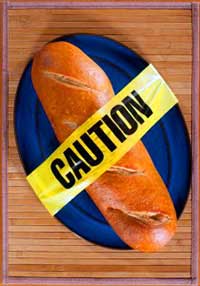 A recent study by the Mayo Clinic found that 1 in 100 people has CD, making it four times more common today than it was in the 1950s. According to Dorfman, this may have to do with the fact that the gluten in today’s wheat has been genetically modified to contain more protein, causing it to become more reactive. If your child shows any of these symptoms, Dorfman suggests starting an elimination diet. Even if the CD screen comes back negative, you should start the elimination diet anyway because the child may still be sensitive to gluten. Be patient, it can take at least four to six weeks to see any difference. How do you tell a child that he can’t have pizza? Try saying “We’ll be doing an experiment for six weeks to see if this makes you feel better,” suggests Dorfman, adding that children usually stop eating breads when they start feeling better. “It’s also important that the entire family follows the diet so the kid doesn’t feel singled out.”
A recent study by the Mayo Clinic found that 1 in 100 people has CD, making it four times more common today than it was in the 1950s. According to Dorfman, this may have to do with the fact that the gluten in today’s wheat has been genetically modified to contain more protein, causing it to become more reactive. If your child shows any of these symptoms, Dorfman suggests starting an elimination diet. Even if the CD screen comes back negative, you should start the elimination diet anyway because the child may still be sensitive to gluten. Be patient, it can take at least four to six weeks to see any difference. How do you tell a child that he can’t have pizza? Try saying “We’ll be doing an experiment for six weeks to see if this makes you feel better,” suggests Dorfman, adding that children usually stop eating breads when they start feeling better. “It’s also important that the entire family follows the diet so the kid doesn’t feel singled out.”
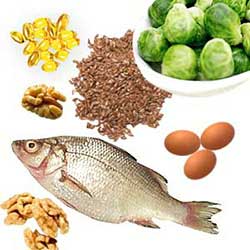 ESSENTIAL FATTY ACIDS DEFICIENCY
ESSENTIAL FATTY ACIDS DEFICIENCY
A whopping 4.5 million children are currently diagnosed with Attention-Deficit Hyperactivity Disorder (ADHD), and the numbers keep rising. Children with severe ADHD are often prescribed Ritalin or Risperdal. Dorfman suggests simply eliminating high-fructose corn syrup from their diets (since children have shown to improve their behavior after cutting out these empty calories) and adding essential fatty acids like Omega-3 and Omega-6. “Fat makes up 60% of our brain,” says Dorfman. If children don’t consume the essential fatty acids (EFAs) found in nuts, seeds, olive and canola oil, seaweed, and fish, or in supplements, their brain will still develop, but using low-quality fats. And don’t expect these brains to perform at full capacity.
In fact, “lack of availability of EFAs is linked to ADHD, dyslexia, and a number of other behavioral and psychological disorders,” says Dorfman. To boost attention and brain activity, and to reduce anxiety, she strongly suggests giving children high-quality fish oil. Stay clear from gummies (which have minimal quantities of Omega-3) and use brands like Nordic Naturals, Omega-Cures, Barlean’s, Minami, and Omega Right, which have a high dose of DHA and EPA, and taste great. Another symptom of EFA deficiency is chicken skin or Keratosis Pilaris, those dry patches with small acne-like bumps in the upper arms, buttocks or torso.
 LACTOSE INTOLERANCE
LACTOSE INTOLERANCE
A toddler who suffers frequent ear infections may be lactose intolerant. Parents can try eliminating all dairy products from the child’s diet; if the congestion and stuffy nose disappear in a few weeks, chances are they’ve caught the culprit. Since children later identified with attention-deficit hyperactivity disorder tend to have frequent ear infections, it’s important to find the allergens (which may also be wheat, soy, eggs) quickly. A picky eater may also be lactose intolerant. If his respiratory system is lined with mucus, he won’t be able to smell and taste food.
Could it be that my son’s joints pain, chicken skin and mild osteoporosis—all symptoms the pediatrician never connected—were triggered by gluten? After discussing it with my husband and my 7-year-old, we’ve decided to try the elimination diet and see what happens. As hard as it will be for this pizza-lover to live in a gluten-free household, I will just have to try it. The possibility of knowing the truth behind this mysterious pain is just too empowering.

